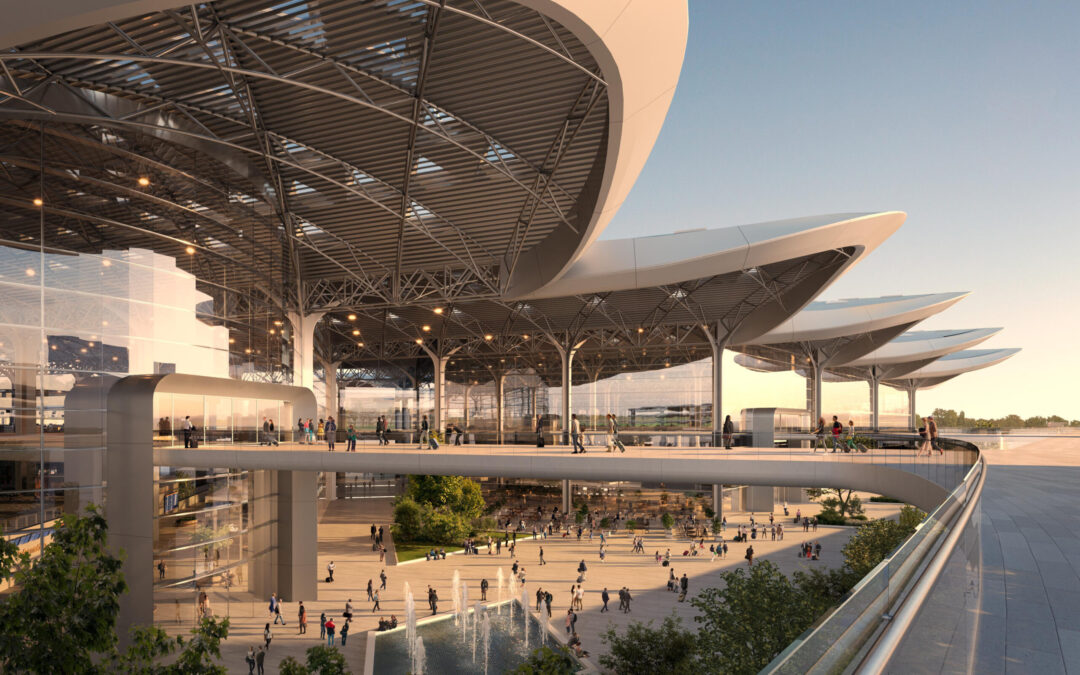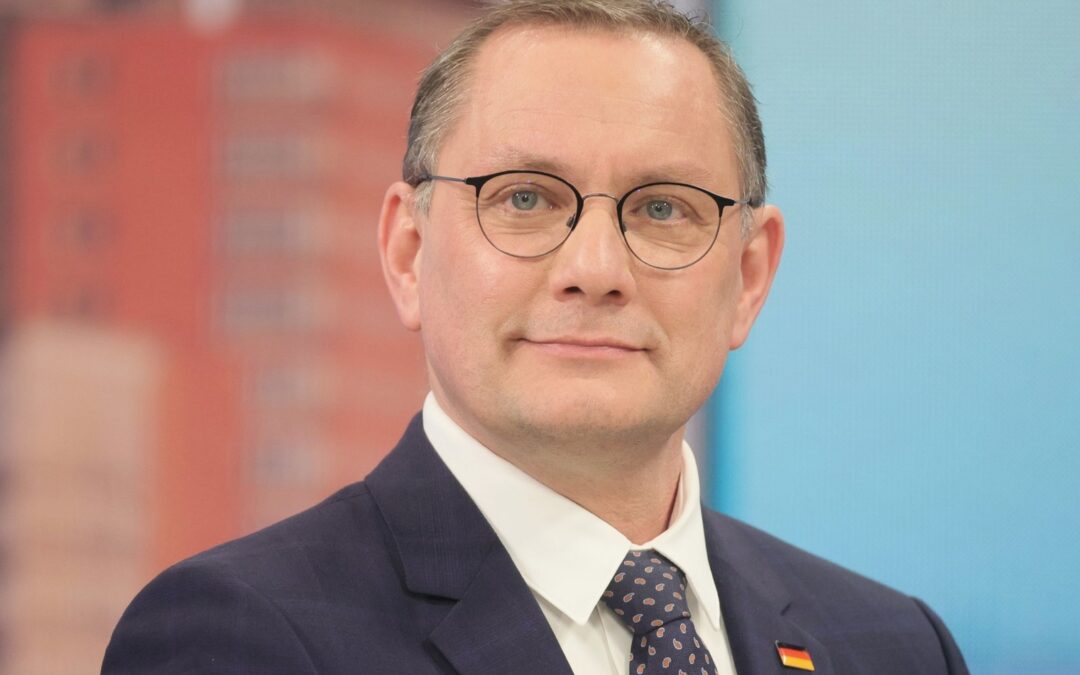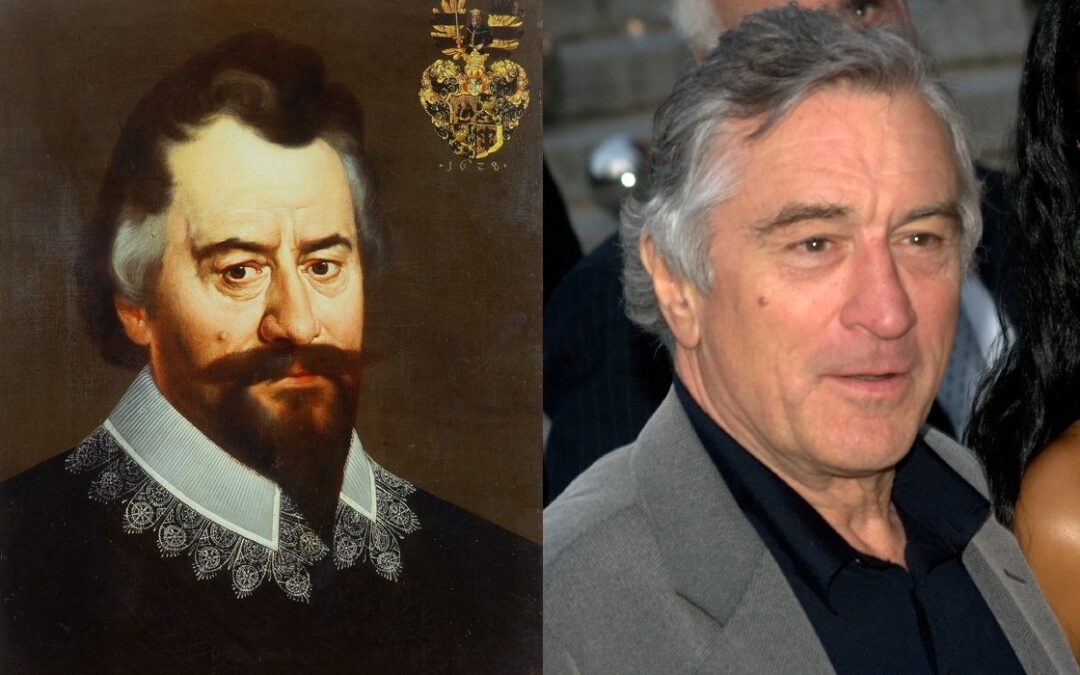The state company developing a planned “mega-airport” and transport hub in central Poland, a flagship government project, has unveiled a design concept for what the complex will look like, prepared by the firm of world-renowned British architect Sir Norman Foster.
Today’s announcement comes two days after the company also published a master plan outlining in more detail the plans for the project, known as the Solidarity Transport Hub (CPK) and which is due to open in 2028. The site is located around halfway between the cities of Warsaw and Łódź.
The architectural images, prepared by Foster + Partners and Buro Happold, show the airport’s passenger terminal, main rail station, and transfer hub.
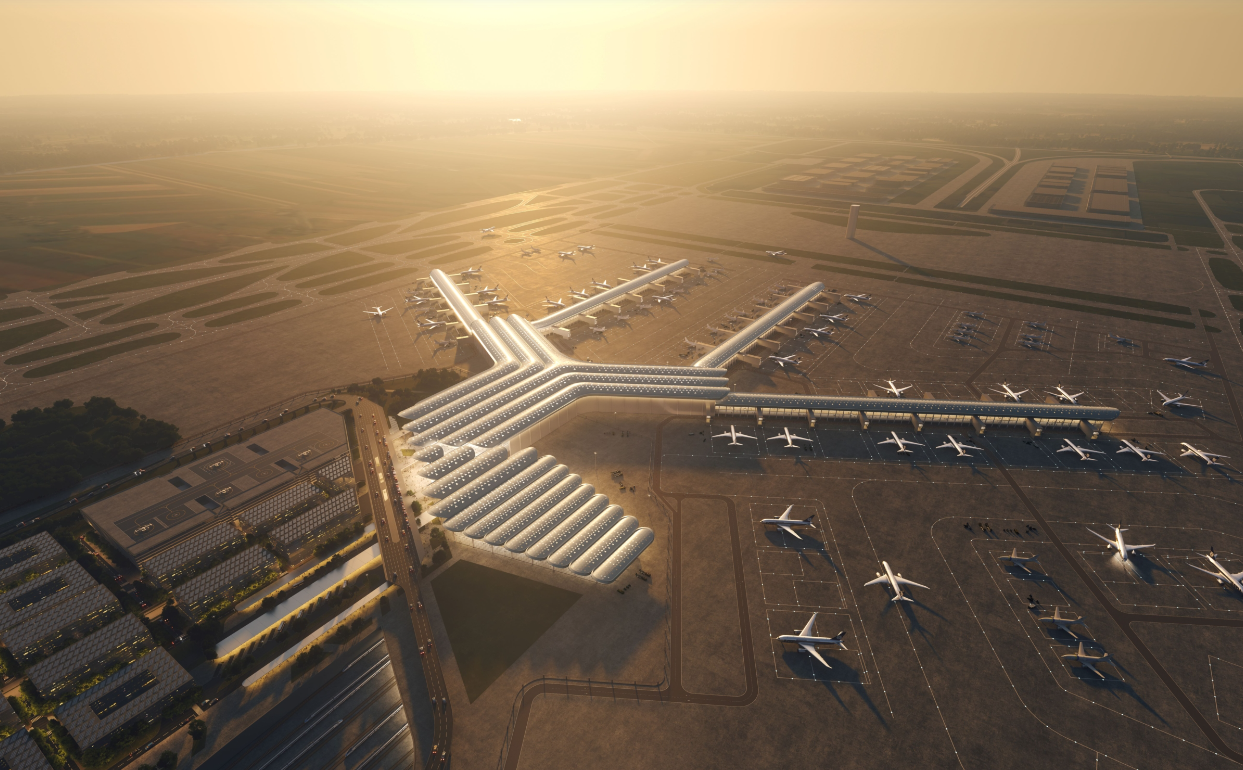
“I am convinced that this architecture, developed with the participation of world-leading designers, will create enormous business opportunities, attract foreign investments and stimulate the economy not only in Poland, but also in the whole of Central and Eastern Europe,” said Marcin Horała, the government official overseeing CPK.
The government envisions the airport becoming a major global hub, serving at least 65 million passengers a year by 2060. By comparison, in 2019, before the pandemic, the major European hubs of Amsterdam and Frankfurt served 72 million and 71 million passengers respectively.
CPK will be “an air gate to the world and, for those arriving, their first experience of our country”, said Mikołaj Wild, head of the firm developing the project, which is expected to cost tens of billions of zloty to complete.
The designs envisage CPK having a main central atrium that will act as a transfer space for passengers arriving or departing by all means of transport: air, rail and road.

“Our design focuses on passengers,” says Grant Brooker, head of studio at Foster + Partners. “Our ambition is to create an accessible building that will improve the travel experience…[through] clear visual connections.”
“We believe the CPK will completely change the way people travel around Poland, and will also become a new gateway to Europe and the rest of the world,” he added.
The rest of the design includes a 400,000 square metre airport passenger terminal and a railway station consisting of six underground platforms serving 12 tracks. CPK will also include a bus station as well as an area, called Airport City, made up of hotels, offices and other commercial facilities.
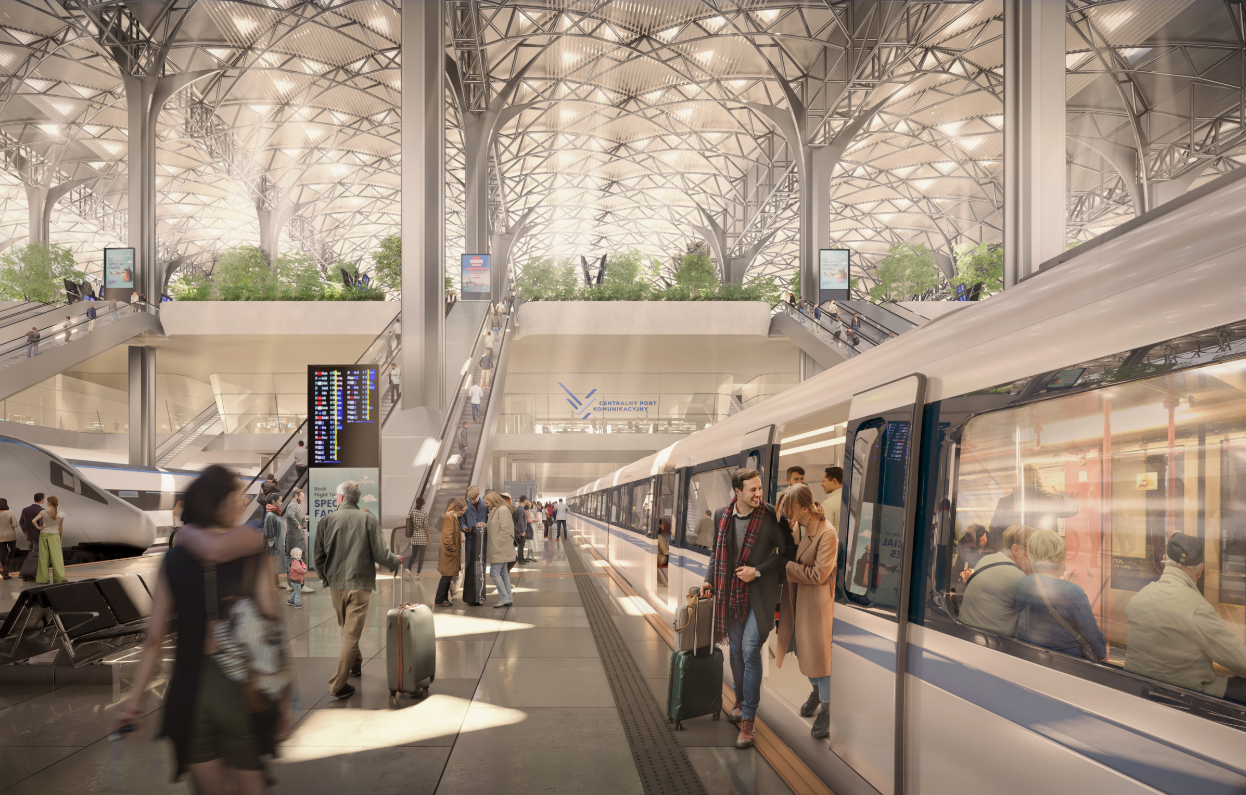
The master plan for the project unveiled on Tuesday includes a baseline forecast for the airport to serve 40 million passengers by 2040 and 65 million by 2060. Initially, around 40% are expected to be transfer traffic, rising later to 45-50%. The airport will have two runways, with potential for a third to be added.
CPK will be connected to Warsaw and Łódź by high-speed rail, with the firm forecasting that around 40% of passengers will use this service to arrive. Half will come by car or taxi (a journey that currently takes around 45 minutes from Warsaw) and the remainder by bus.
Once CPK opens, it is planned for Warsaw’s current main airport, Chopin, which served almost 19 million passengers in 2019, to close to civilian traffic.
Aviation industry trends means that the new “mega-airport” being planned by Poland’s government will adopt a “completely different” business model than the one previously envisioned, with a greater emphasis on air cargo, says its executive director https://t.co/99lXkgW6Zc
— Notes from Poland 🇵🇱 (@notesfrompoland) September 30, 2021
However, while the government and Polish national carrier LOT have given strong backing to the plan, others have been more sceptical, or even outright critical.
A number of opposition parties have questioned the cost and benefit of the project. Last week, Third Way, a centre-right opposition alliance, pledged to scrap CPK if the opposition come to power at this autumn’s elections, saying that the tens of billions of zloty it will cost to build could be better spent elsewhere.
Meanwhile, Michael O’Leary, CEO of Ryanair, which is Poland’s biggest airline by passenger numbers, has repeatedly criticised CPK, calling it a “crazy” idea conceived by “very stupid politicians” will “waste 30 billion zloty on a sandcastle in the middle of nowhere”.
The Polish government's planned mega-airport was conceived by “very stupid politicians”, says the CEO of Ryanair, Poland's biggest airline by passenger numbers.
The head of the project says it would be a "waste of time" to respond to O'Leary's comments https://t.co/c0KmZrDGzU
— Notes from Poland 🇵🇱 (@notesfrompoland) February 9, 2023
All image credits: CPK

Daniel Tilles is editor-in-chief of Notes from Poland. He has written on Polish affairs for a wide range of publications, including Foreign Policy, POLITICO Europe, EUobserver and Dziennik Gazeta Prawna.
